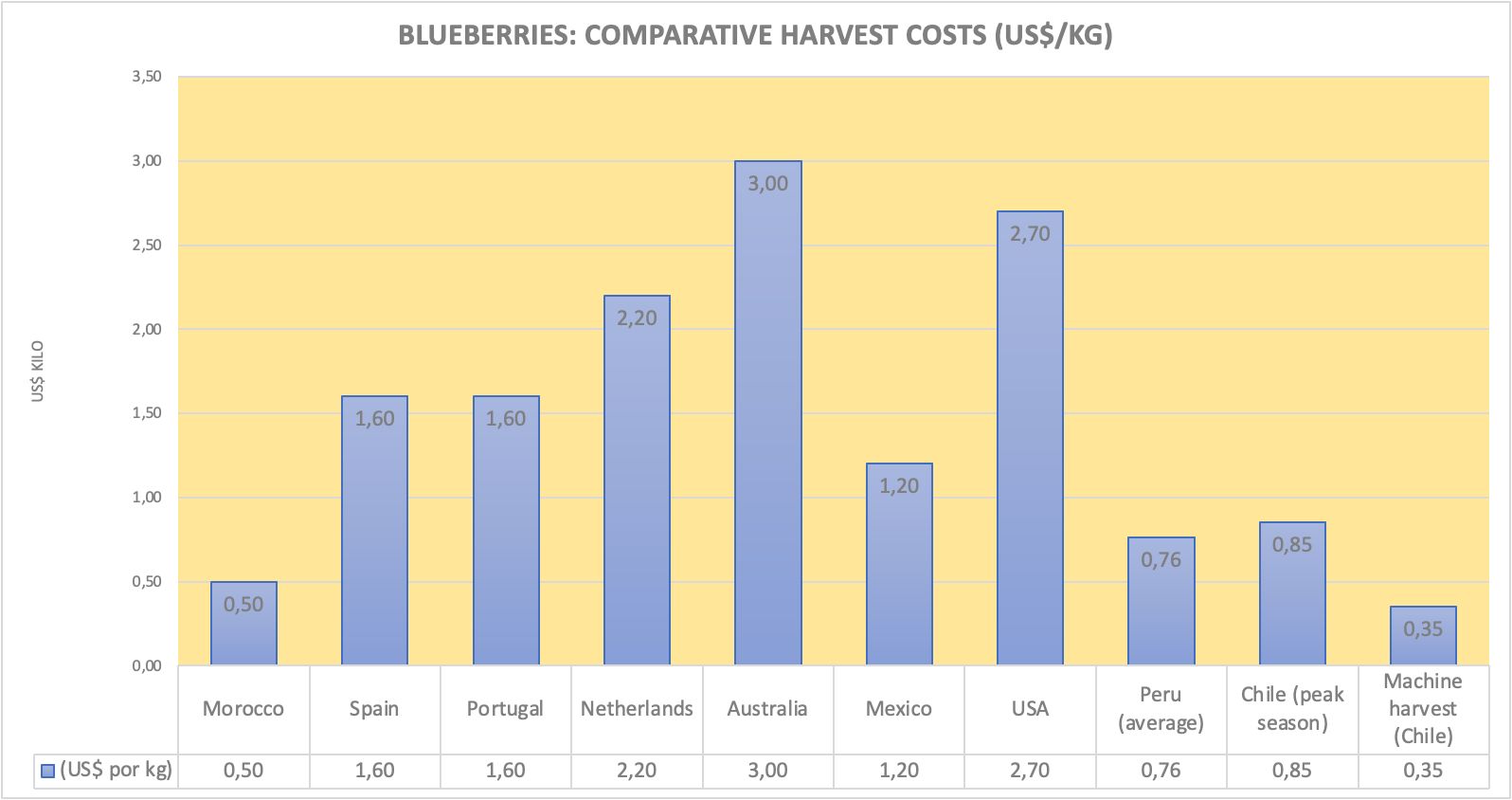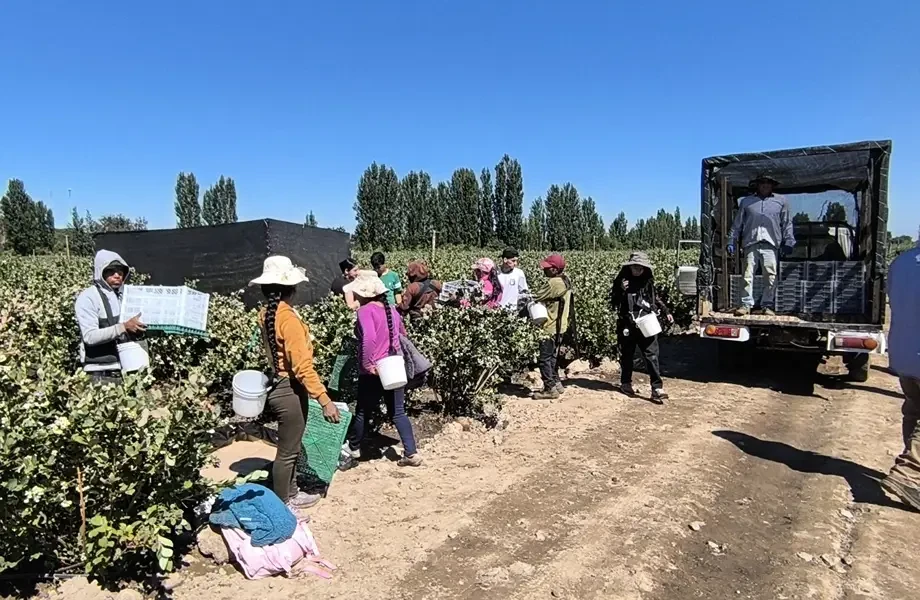Chilean agronomist and consultant Fernando Martino recently published a chart summarizing blueberry harvesting costs in different global production areas.
The comparative analysis of blueberry harvesting costs (US$/kg) across different countries highlights significant variations, which can be attributed to factors such as labor costs, operational efficiency, and the use of mechanization.
Producing countries fall into three categories:
Lowest costs
- Morocco has the lowest harvesting cost ($0.50/kg), suggesting a competitive advantage in terms of low labor costs.
- Chile (mechanized harvesting) has the absolute lowest cost ($0.35/kg), confirming the key role of automation in reducing expenses.
Intermediate costs
- Peru ($0.76/kg) and Chile in peak season ($0.85/kg) show moderate costs, likely due to a mix of operational efficiency and favorable harvesting conditions.
- Mexico ($1.20/kg), Spain ($1.60/kg), and Portugal ($1.60/kg) fall into a mid-range category, where labor is still significant but less expensive than in more developed economies.
Highest costs
- The Netherlands ($2.20/kg) and the USA ($2.70/kg) stand out for their higher costs, reflecting a more expensive workforce and possibly a lower degree of automation.
- Australia has the highest cost ($3.00/kg), likely due to a combination of high wages and overall higher operational expenses.
Conclusions and Implications:
- Producer competitiveness: Producers in countries with lower harvesting costs (Morocco, Chile, Peru) have a clear pricing advantage in the global market.
- Role of mechanization: The very low cost of mechanized harvesting in Chile ($0.35/kg) demonstrates that automation is a strategic lever for cost reduction.
- Challenges for high-cost countries: Australia, the USA, and the Netherlands will likely need to focus on differentiation strategies (premium quality, sustainability, technological efficiency) to remain competitive.
These data suggest that technological innovation and efficient labor management will be key factors in maintaining profitability in the blueberry sector.











